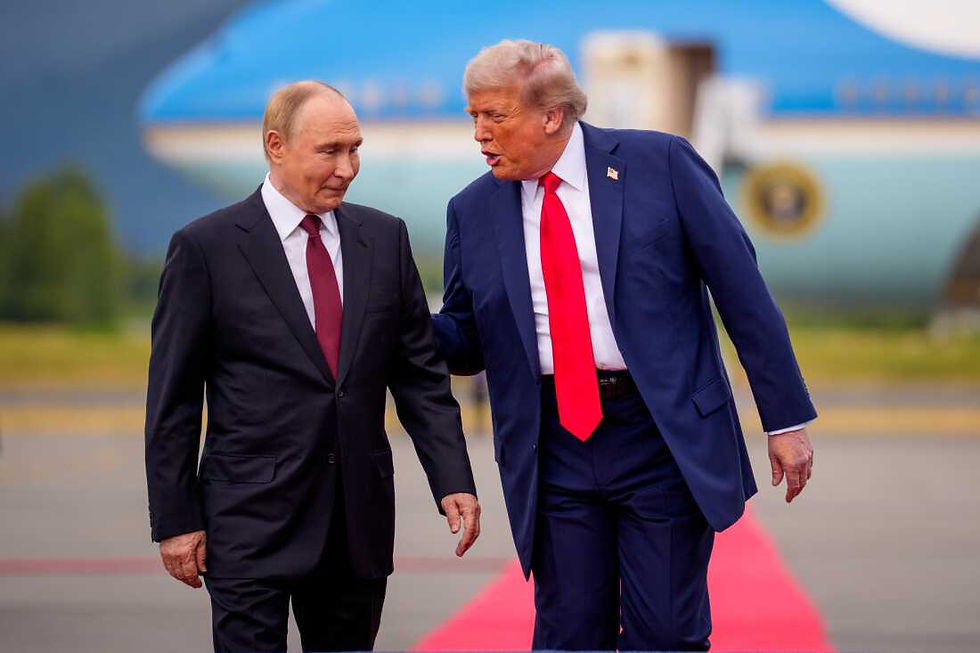Emotional Intelligence in Diplomacy: Trump and Putin’s Alaska Summit
- frankquattromani
- Aug 18
- 2 min read
When world leaders meet, the headlines often focus on policy details and political concessions. Yet, beneath the rhetoric and strategy lies a different kind of influence: emotional intelligence (EQ). The recent Trump–Putin summit in Alaska serves as a vivid reminder that diplomacy isn’t just about power—it’s about presence. Here’s how social awareness, a core EQ competency, manifested in the meeting—and why it mattered.

1. Reading Signals Before Speaking
From the moment they greeted each other on the tarmac—with a red carpet welcome and a flyover by stealth bombers—both Trump and Putin were engaging in a choreography of emotional impact. The handshakes, elbows, and limousines weren’t just diplomatic pageantry; they were deliberate cues aimed at setting tone, asserting presence, and easing tension. Their ability to modulate space and symbolism demonstrated keen social awareness.
2. Toning Language and Setting the Pace
Both leaders delivered scripted remarks, avoiding press questions and keeping their tones measured. Trump called the talks “productive” and “extremely productive,” while avoiding specifics. Putin spoke of addressing "root causes" of the conflict. This restraint—knowing when not to push further—reflects a nuanced awareness of global sensitivities and internal expectations.
3. Adapting Strategy Mid-Conversation
Trump entered hoping for a swift ceasefire but shifted his approach toward a broader peace agreement, aligning more closely with Putin’s stance. This pivot—responding in the moment to what Putin seemed receptive to—demonstrates interpersonal flexibility. It shows the use of real-time emotional calibration rather than rigid politicking.
4. Invoking Shared Symbolism
The Alaska setting itself—a bridge between East and West—is both geographical and symbolic. Choosing such a meeting place suggests thoughtful emotional framing: a nod to Cold War era familiarity and continuity. This type of symbolic awareness sets emotional receptivity before any words are exchanged.
5. Leaving Space for Follow-Up Collaboration
Neither leader pressed for final deals in Alaska. Instead, they framed the event as part of a longer process. Trump emphasized consulting European allies and Ukrainian President Zelenskyy next. Putin hinted at a future meeting in Moscow. This strategic pacing demonstrates awareness that emotional readiness and trust evolve over time—and no room can be rushed.

Why This Matters for Leadership and Agency
Cultural & Emotional Tuning: Leaders who can sense emotional currents—tone, timing, readiness—can deliver impact in any context.
Trust Through Presence: Social awareness creates psychological safety, even in high-stakes environments.
Strategic Patience: Knowing when to push and when to pause can safeguard relationships for future progress.
Leadership Extension: Your emotional intelligence becomes a soft power interpreter, often more persuasive than any hardline stance.
Politics may steer the ship, but emotional intelligence holds the helm. At the Alaska summit, Trump and Putin demonstrated that apart from geopolitical stakes, diplomacy hinges on how well you understand—and respond to—the emotional landscape in the room.
While the path to peace remains uncertain, their emotionally calibrated presence provides a subtle yet essential lesson: soft skills often sway the outcome when hard power cannot.




Comments